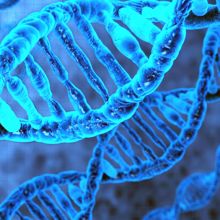Prequalification of medicines by WHO
21.08.2019

WHO prequalification of medicines is a service provided by WHO to assess the quality, safety and efficacy of medicinal products. Originally, in 2001, the focus was on medicines for treating HIV/AIDS, tuberculosis and malaria. In 2006, this was extended to cover medicines and products for reproductive health and again in 2008, to cover prequalification of zinc, for managing acute diarrhoea in children. At the end of 2012, the WHO List of Prequalified Medicinal Products contained 316 medicines for priority diseases.
Every year, billions of US dollars worth of medicines are purchased by international procurement agencies for distribution in resource-limited countries. Prequalification is intended to give these agencies the choice of a wide range of quality medicines for bulk purchase.
The WHO prequalification of medicines process: how does it work?
Prequalification consists of five components.
1. Invitation
The WHO Prequalification of Medicines Programme (PQP), other UN agencies (UNAIDS and UNICEF) and UNITAID, issue an invitation to manufacturers to submit an expression of interest (EOI) for product evaluation. Only products included in an EOI are eligible for prequalification.
The inclusion of a medicine in an EOI is based on one or more of three criteria:
• it is listed on the WHO Model List of Essential Medicines;
• an application for its addition to the Model List has been submitted to the relevant WHO Expert Committee for assessment, and is likely to meet the criteria for inclusion (based on public health need, comparative effectiveness, safety and cost-effectiveness);
• it is recommended for use by a current WHO treatment guideline.
2. Dossier submission
The manufacturer provides a comprehensive set of data about the quality, safety and efficacy of the product submitted for evaluation. This includes:
• data on the purity of all ingredients used in manufacture;
• data on the finished pharmaceutical product (such as information about stability);
• results of bioequivalence tests (clinical trials conducted in healthy volunteers), unless waived.
3. Assessment
A team of assessors evaluates all the data presented. Assessment teams include WHO staff and experts from national regulatory authorities worldwide.
4. Inspection
A team of inspectors verifies that the manufacturing sites for the finished pharmaceutical product and its active pharmaceutical ingredient(s) comply with WHO good manufacturing practice. They also verify that any contract research organization that conducted any clinical studies relating to the submitted product complies with WHO good clinical practice and WHO good laboratory practice.
5. Decision
If the product is found to meet the specified requirements, and the associated manufacturing site(s) and contract research organization(s) are compliant with WHO standards, the product is added to the WHO list of prequalified medicinal products.
The WHO prequalification of medicines process can take as little as three months, provided the data presented are complete and demonstrate that the product meets all required standards. If data are insufficient, however, the process can take considerably longer since the manufacturer must submit the necessary data for reassessment.
To ensure that prequalified products continue to meet WHO specifications, PQP regularly re-inspects manufacturing sites of prequalified products. It also evaluates any changes (known as "variations") made to specifications, manufacturing processes and quality control of prequalified products, and conducts random quality control tests on sampled prequalified products.
Increasing the availability of quality-assured medicines
PQP bases its activities on international pharmaceutical standards for medicines quality, safety and efficacy. As well as prequalifying medicines, it also prequalifies pharmaceutical quality control laboratories and active pharmaceutical ingredients, and conducts considerable advocacy for medicines of guaranteed quality. Its long-term goal is to increase the availability of quality-assured medicines by assisting manufacturers to comply with WHO standards and supporting regulatory authorities to implement them. It does not seek to replace national regulatory authorities or national authorization systems for importation of medicines.
Capacity building and technical assistance
In addition to evaluation and inspection activities, PQP builds national capacity for sustainable manufacturing and monitoring of quality medicines, by organizing training and hands-on experience at the country-level.
It also offers a three-month rotational post at WHO headquarters to national regulatory staff from developing countries. By working closely with senior Programme assessors, incumbents increase their technical expertise and enhance information exchange between their regulatory authority and PQP on their return to their home country. Each of these activities promotes communication between stakeholders on pharmaceutical issues relating to quality.
Additionally, PQP provides targeted technical assistance for manufacturers and quality control laboratories. Assistance is delivered by specialists who are not involved in WHO prequalification assessment or inspection activities, but who can conduct audits and training at country-level. This assistance is aimed at resolving specific technical problems.
Why does WHO run the Prequalification of Medicines Programme?
PQP is a United Nations programme managed by WHO. It is the only global medicines quality assurance programme. No other global body receives the active support of regulatory experts from both developed and developing countries.
Source: www.who.int

